Editorial Article
Volume 4 Issue 2
Membranes for Guided Bone Regeneration Applications
1Dipartimento Scienze dell'invecchiamento, neurologiche, ortopediche e della testa-collo, Università Cattolica del Sacro Cuore, Rome, Italy
2UOC Chirurgia Odontostomatologica e Implantologia, Fondazione Policlinico Universitario A. Gemelli, IRCCS, Rome, Italy
3Dipartimento di Scienze biotecnologiche di base, cliniche intensivologiche e perioperatorie, Università Cattolica del Sacro Cuore, Rome, Italy
4Fondazione Policlinico Universitario A. Gemelli, IRCCS, Rome, Italy
*Corresponding Author: Giuseppina Nocca, Dipartimento di Scienze biotecnologiche di base, cliniche intensivologiche e perioperatorie, Sezione di Biochimica, Università
Cattolica del Sacro Cuore, Rome, Italy.
Received: June 09, 2020;; Published: June 11, 2020
Abbreviations: GBR: Guided Bone Regeneration; ePTFE: Expanded Polytetrafluoroethylene; dPTFE: High-density Polytetrafluoroethylene; PGA: Polyglycolic Acid.
Guided Bone Regeneration (GBR) is the most predictable and widely documented technique of bone regenerative surgery. It is based on the use of a barrier membrane that has the function of isolating the regenerated site from tissues with a higher proliferative rate, such as the soft tissues overlying the bone defect.
The biological condition of GBR can be applied:
- In order to prevent the reabsorption of the bone crest following the extraction of the dental element, postponing the implant insertion to a subsequent phase, in a technique known as ridge preservation;
- In order to increase the volume of a deficient bone crest, horizontally, vertical or their combination, prior to or simultaneously with implant therapy.
To obtain these results, non-resorbable and resorbable membranes have been produced over time.
Following the widespread clinical use and extensive research of the barrier membranes used in bone regeneration techniques, it was possible to identify the ideal characteristics, listed below, which a barrier should possess in order to improve as much as possible the regenerative outcome [1].
- Biocompatibility. Mandatory feature to the affixing of a GBR membrane in a regenerative site is the ability to not provoke an immune or inflammatory response in the host.
- Cellular exclusion. The rationale for using a membrane in a regenerative surgical technique, as already illustrated, lies in excluding the highly proliferative tissues from the affected area. It is important to consider that the maturation of the newly formed tissue is faster and more efficient if the barrier effect of the membrane is limited to cell migration and does not prevent the exchange of gas and nutrients with the surrounding flap and tissues.
- Tissue integration. The barrier's ability to favor the integration of the flap on its external surface is essential to improve its mechanical stability and to avoid its epithelial encapsulation, a phenomenon that could lead to early exposure, frequently associated with regenerative therapy failure.
- Maintenance of space. The action of space making by the membrane is defined as the ability to resist the possible collapse caused by the action of various forces in vivo and therefore allow the creation and maintenance of well-defined volume and morphology of the site operated during the healing period. The space making ability is a characteristic strictly dependent on the rigidity of the membrane. More flexible membranes, such as resorbable ones, often have not the necessary rigidity and their use is frequently accompanied by that of materials that offer mechanical support such as autologous bone grafts or bone substitutes. Some non-resorbable membranes, already characterized by a rigid structure, are further reinforced with titanium structures designed to improve their mechanical characteristics.
- Handling. In order for the procedure to be completed in the shortest time and in the best possible way, the handling in terms of modeling, cutting and affixing the membrane is a fundamental feature for clinical use. More flexible membranes, such as resorbable ones, offer an advantage in this sense.
Non-Resorbable Membranes:
The first membranes used in the field of bone regeneration were composed of non-resorbable materials.
The Millipore® membrane, a barrier in cellulose acetate, was the forefather of this category in the very early stages of development of the techniques. Subsequently, we observe the transition, both in research and in the clinic, to membranes in expanded polytetrafluoroethylene (ePTFE), introduced on the market as Gore Tex Periodontal Material®.
The first membranes used in the field of bone regeneration were composed of non-resorbable materials.
The Millipore® membrane, a barrier in cellulose acetate, was the forefather of this category in the very early stages of development of the techniques. Subsequently, we observe the transition, both in research and in the clinic, to membranes in expanded polytetrafluoroethylene (ePTFE), introduced on the market as Gore Tex Periodontal Material®.
Histological studies, [2, 3] demonstrated the great biocompatibility characteristics of this material, showing the excellent integration of the flap at the top, with collagen fibers belonging to the sub-epithelial connective tissue in close contact with the membrane surface, and a thin layer of loose connective tissue deriving from the bone marrow, richly vascularized, immediately below the barrier. The very low presence of macrophages, lymphocytes and granulocytes in these tissues is evidence of the excellent biocompatibility of ePTFE [2, 3].
Inherent in the non-resorbability of the ePTFE membrane is the need for a second surgical act aimed at its removal, which not only increases the discomfort and morbidity for the patient, but also causes a certain amount of bone resorption that is a direct consequence of the elevation of a flap [4].
The results obtained through a GBR technique with non-resorbable membranes proved to be immediately satisfactory, both in preventive and contextual regeneration of implant therapy, while simultaneously bringing to light the risk of complications of the procedure, primarily represented by the exposure of the membrane [5, 6].Many classic studies have shown that this adverse event is followed by a net decrease in regenerative outcome [6-10]. In more recent times, a new material has been introduced for the composition of non-resorbable barrier membranes: high-density polytetrafluoroethylene (dPTFE), already considered the gold standard for procedure [11].
The dense structure of the dPTFE gives it a nano-porosity, with pores smaller than 0.3µm, which make it a material technically impermeable to bacteria, having these dimensions between 0.5 and 5µm.
This characteristic makes its eventual exposure to the oral cavity a less harmful complication for the regeneration procedure [12,13]. If on the one hand, it allows resistance to bacterial aggression, on the other hand, the non-porosity of the dPTFE constitutes a disadvantage in terms of tissue integration, not allowing the cells of the connective tissue of the flap to adhere to its extremely smooth surface [14]. This disadvantage can be compensated by the macro design of the membrane, for example by providing it with dimples and grooves that help to house the cells.
Resorbable Membranes
An obvious point against the use of a non-resorbable membrane in a surgical regenerative technique is the need for their removal during a second surgical phase.
An obvious point against the use of a non-resorbable membrane in a surgical regenerative technique is the need for their removal during a second surgical phase.
This factor led to the development and use of membranes resorbable by the body. In addition to the streamlining of regenerative surgical procedures, resorbable membranes have other advantages reported in the literature, such as faster healing of soft tissues, better handling and quick resorption in case of early exposure to the oral environment [15].
Absorbable membranes are divided into 2 groups: membranes composed of synthetic polymers and membranes derived from collagen of animal origin.
a) Synthetic Membranes
The synthetic polyesters most widely used in the construction of barrier membranes are polylactic acid (PLA), polyglycolic acid (PGA) or combinations of the two.
The synthetic polyesters most widely used in the construction of barrier membranes are polylactic acid (PLA), polyglycolic acid (PGA) or combinations of the two.
The advantage of synthetic polymers compared to collagen is their characteristic of being completely degradable by the host cells in carbon dioxide and water through the Krebs cycle [16].
The resorption time of the synthetic membranes used in GBR procedures is between 5 and 12 months [17].
The resorption time of the synthetic membranes used in GBR procedures is between 5 and 12 months [17].
b) Collagen Membranes
Most of the membranes on the market are obtained from type I collagen or from a combination of type I and type III, obtained from bovine tendons or pig dermis. Collagen membranes have several positive qualities highlighted in the literature, including hemostatic activity, low immunogenic response [18], easy manipulation, direct osteogenic effect [19] and ability to increase the thickness of the tissues [20]. On the other hand, collagen barriers usually show poor mechanical qualities and a faster degradation rate compared to that of synthetic membranes in relation to the enzymatic activity of macrophages and granulocytes [21]. To cope with the rapid resorption, cross-linking technologies of collagen fibers have been introduced to hinder the degradation of the membrane by the body.
Most of the membranes on the market are obtained from type I collagen or from a combination of type I and type III, obtained from bovine tendons or pig dermis. Collagen membranes have several positive qualities highlighted in the literature, including hemostatic activity, low immunogenic response [18], easy manipulation, direct osteogenic effect [19] and ability to increase the thickness of the tissues [20]. On the other hand, collagen barriers usually show poor mechanical qualities and a faster degradation rate compared to that of synthetic membranes in relation to the enzymatic activity of macrophages and granulocytes [21]. To cope with the rapid resorption, cross-linking technologies of collagen fibers have been introduced to hinder the degradation of the membrane by the body.
The resorption time of non-cross-linked collagen membranes is not predictable and varies between 4 and 24 weeks, while the application of a cross-linking technology prolongs this process up to 4-6 months [17].
The role of slowed degradation is controversial in the literature when membrane exposure occurs. According to an animal study, collagen cross-linking makes it able to resist bacteria collagen-lytic activity for a longer period, leading to a maintained process of severe inflammation and reabsorption of the regenerated area [22].
Other studies highlight the prompt covering of the defect by the mucosa, which is followed, thanks to the membrane's resistance to reabsorption (which preserves its barrier functions), by the success of the bone regeneration promoted by it [23]. From the above reported it can be concluded that there is no perfect material for GBR membranes, therefore research continues both to improve existing materials and to produce new ones.
Conflict of Interest
Authors declare that does not any financial interest or any conflict of interest exists.
Authors declare that does not any financial interest or any conflict of interest exists.
References
- Hardwick R, Scantlebury TV, Sanchez R, Whitley N, Ambruster J. Membrane design criteria for guided bone regeneration of the alveolar ridge. In: Buser D, Dahlin C, Schenk RK, editors. Guided bone regeneration in implant dentistry. Chicago: Quintessence, 1994:101–136.
- Schenk RK., et al. “Healing pattern of bone regeneration in membrane-protected defects: a histologic study in the canine mandible”. The International Journal of Oral Maxillofacial Implants 9.1 [1994]: 13-29.
- Jovanovic SA., et al. “Supracrestal bone formation around dental implants: an experimental dog study”. The International Journal of Oral Maxillofacial Implants 10.1 [1995]: 23-31.
- Rasmusson L., et al. "Morphological and dimensional changes after barrier removal in bone formed beyond the skeletal borders at titanium implants. A kinetic study in the rabbit tibia”. Clinical Oral Implants Research 8.2 [1997]: 103-116.
- Becker W., et al. “Five-year evaluation of implants placed at extraction and with dehiscences and fenestration defects augmented with ePTFE membranes: results from a prospective multicenter study”. Clinical Implant Dentistry Related Research 1.1 [1999]: 27-32.
- Simion M., et al. “A comparative study of the effectiveness of e-PTFE membranes with and without early exposure during the healing period”. International Journal of Periodontics Restorative Dentistry 14.2 [1994]:166-180.
- Selvig KA., et al. “Regenerative surgery of intrabony periodontal defects using ePTFE barrier membranes: scanning electron microscopic evaluation of retrieved membranes versus clinical healing”. Journal of Periodontology 63.12 [1992]: 974-978.
- Nowzari H and Slots J. “Microorganisms in polytetrafluoroethylene barrier membranes for guided tissue regeneration”. Journal of Clinical Periodontology 21.3 [1994]: 203-210.
- Nowzari H., et al. “Periodontal pathogens on polytetrafluoroethylene membrane for guided tissue regeneration inhibit healing”. Journal of Clinical Periodontology 22.6 [1995]: 469-474.
- De Sanctis M., et al. “Bacterial colonization of barrier material and periodontal regeneration”. Journal of Clinical Periodontology 23.11 [1996]: 1039-1046.
- Bottino MC., et al. “Recent advances in the development of GTR/GBR membranes for periodontal regeneration-A materials perspective”. Dental Materials 28.7 [2012]: 703-721.
- Barber HD., et al. “Using a dense PTFE membrane without primary closure to achieve bone and tissue regeneration”. Journal of Oral and Maxillofacial Surgery 65.4 [2007]: 748-752.
- Barboza EP., et al. “Guided bone regeneration using nonexpanded polytetrafluoroethylene membranes in preparation for dental implant placements--a report of 420 cases”. Implant Dentistry 19.1 [2010]: 2-7.
- Kasaj A., et al. “In vitro evaluation of various bioabsorbable and nonresorbable barrier membranes for guided tissue regeneration”. Head and Face Medicine 4 [2008]: 22.
- Hämmerle CHF and Jung RE. “Bone augmentation by means of barrier membranes”. Periodontology 2000 33 [2003]: 36-53.
- Hutmacher D., et al. “A review of material properties of biodegradable and bioresorbable polymers and devices for GTR and GBR applications”. The International Journal of Oral Maxillofacial Implants 11.5 [1996]: 667-678.
- Soldatos NK., et al. “Limitations and options using resorbable versus nonresorbable membranes for successful guided bone regeneration”. Quintessence International 48.2 [2017]: 131-147.
- Schlegel AK., et al. “Preclinical and clinical studies of a collagen membrane (Bio-Gide)”. Biomaterials 18.7 [1997]: 535-538.
- Rothamel D., et al. “Biocompatibility of various collagen membranes in cultures of human PDL fibroblasts and human osteoblast-like cells”. Clinical Oral Implants Research 15.4 [2004]: 443-449.
- Pitaru S., et al. “Collagen membranes prevent apical migration of epithelium and support new connective tissue attachment during periodontal wound healing in dogs”. Journal of Periodontal Research 24.4 [1989]: 247-53.
- von Arx T., et al. “Membrane durability and tissue response of different bioresorbable barrier membranes: a histologic study in the rabbit calvarium”. The International Journal of Oral Maxillofacial Implants 20.6 [2005]: 843-853.
- Bornstein MM., et al. “Effect of two different bioabsorbable collagen membranes on guided bone regeneration: a comparative histomorphometric study in the dog mandible”. Journal Periodontology 78.10 [2007]: 1943-1953.
- Friedmann A., et al. "Observations on a new collagen barrier membrane in 16 consecutively treated patients. Clinical and histological findings”. Journal Periodontology 72.11 [2001]: 1616-1623.
Citation:
Giuseppina Nocca., et al. “Membranes for Guided Bone Regeneration Applications”. Oral Health and Dentistry 4.2 (2020): 45-48.
Copyright: © 2020 Giuseppina Nocca., et al. This is an open-access article distributed under the terms of the Creative Commons Attribution License, which permits unrestricted use, distribution, and reproduction in any medium, provided the original author and source are credited.












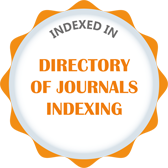
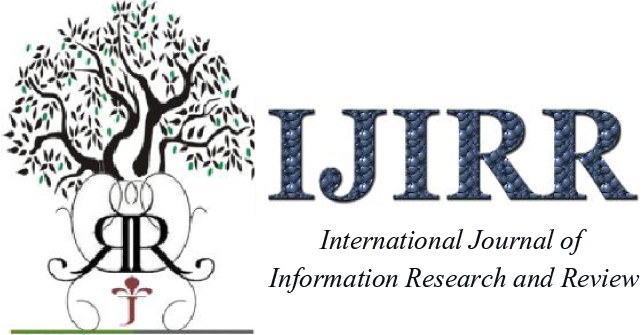



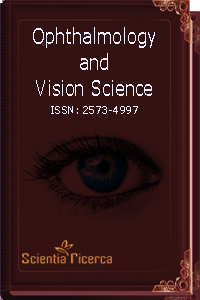
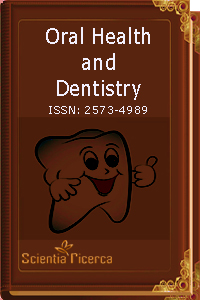
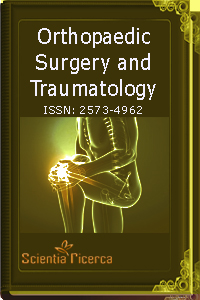

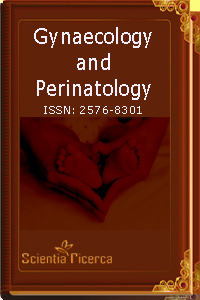
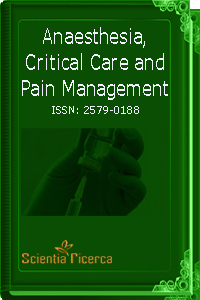
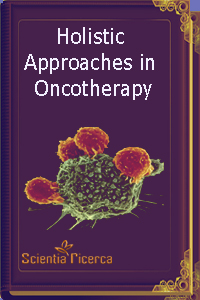
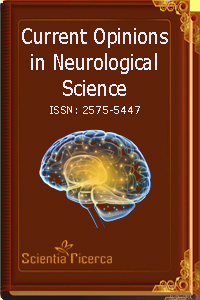
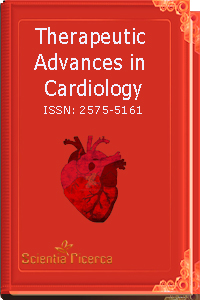
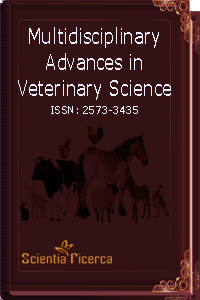
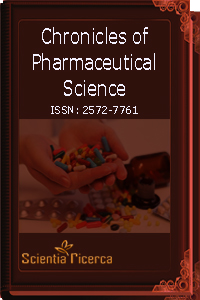
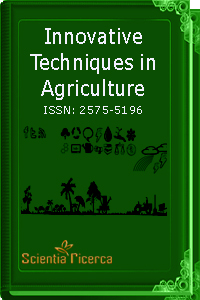
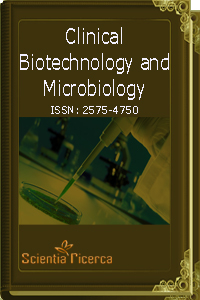
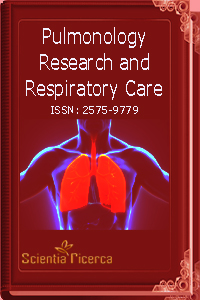
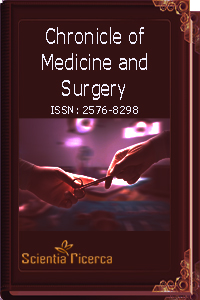

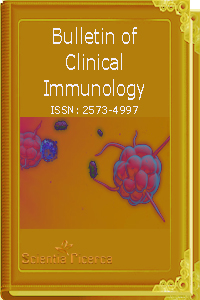
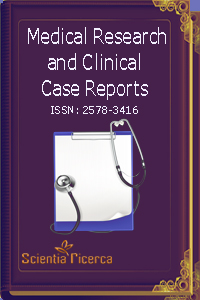
 Scientia Ricerca is licensed and content of this site is available under a Creative Commons Attribution 4.0 International License.
Scientia Ricerca is licensed and content of this site is available under a Creative Commons Attribution 4.0 International License.